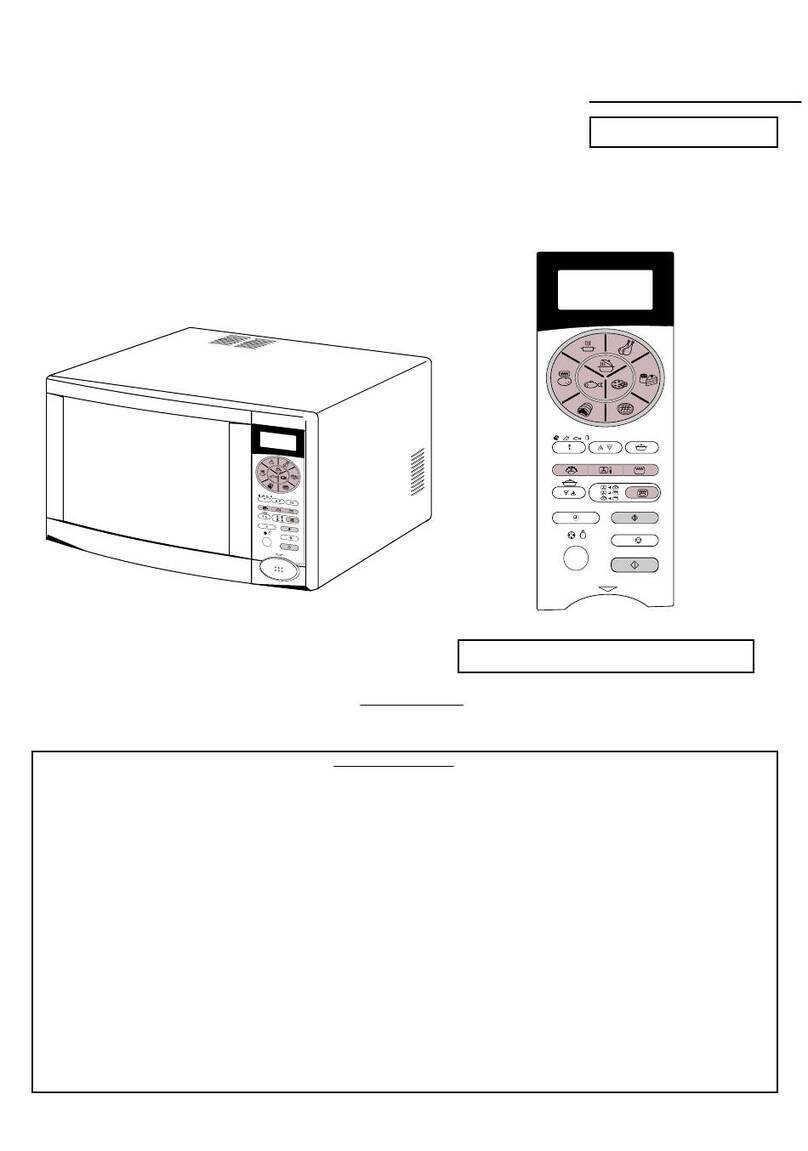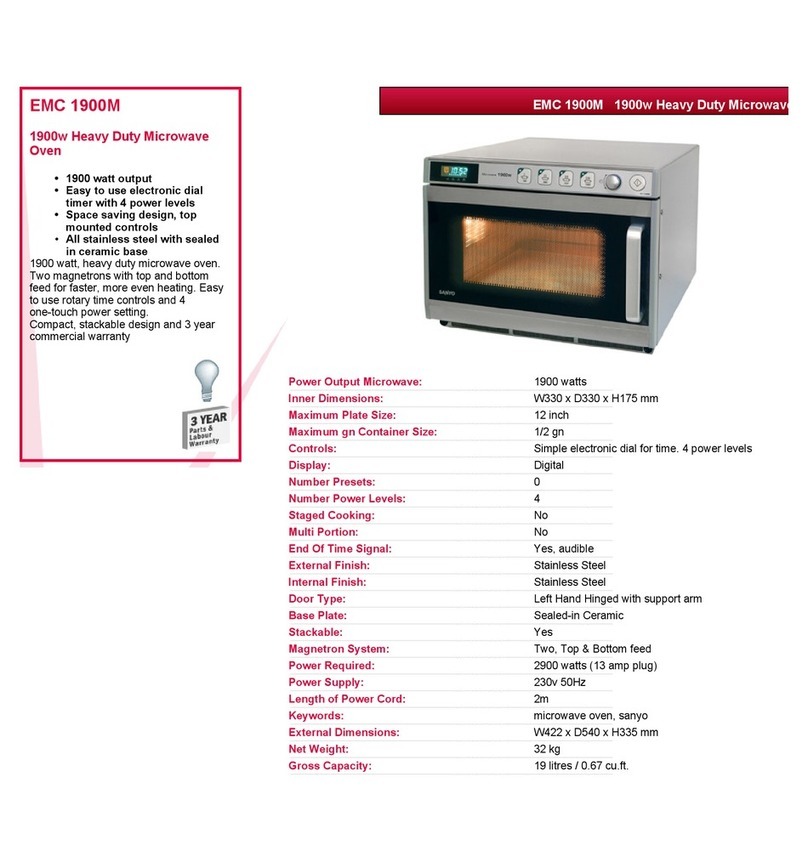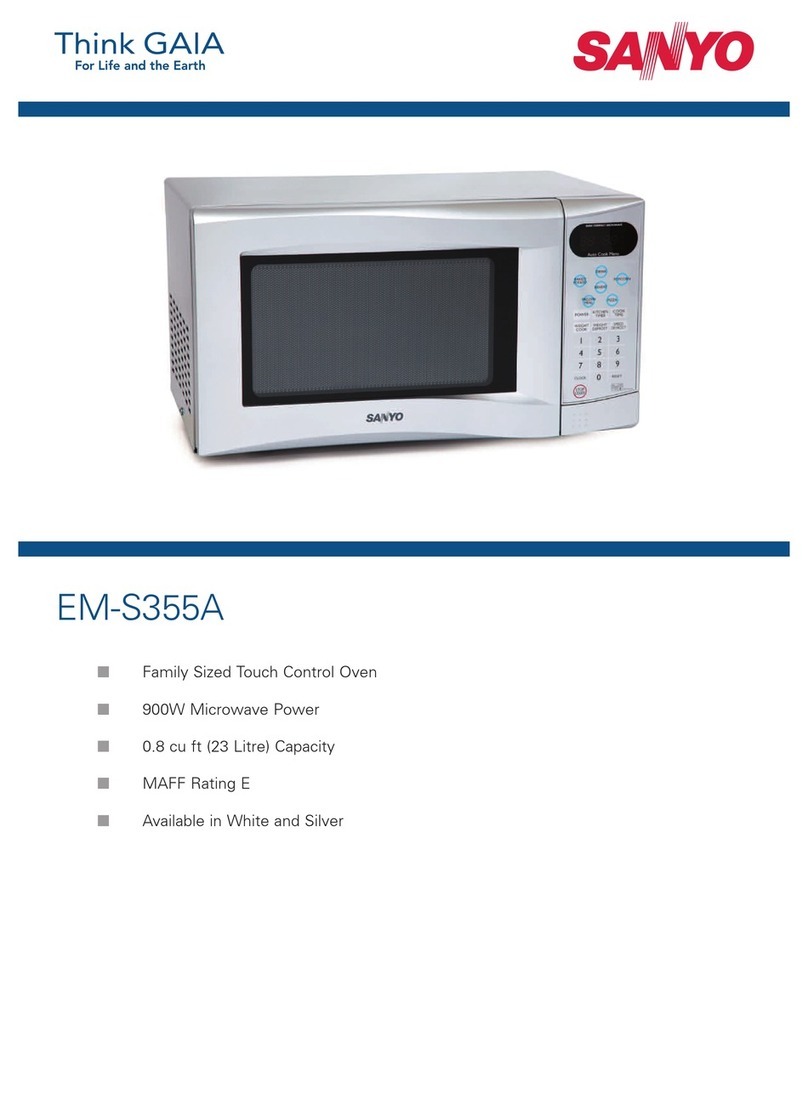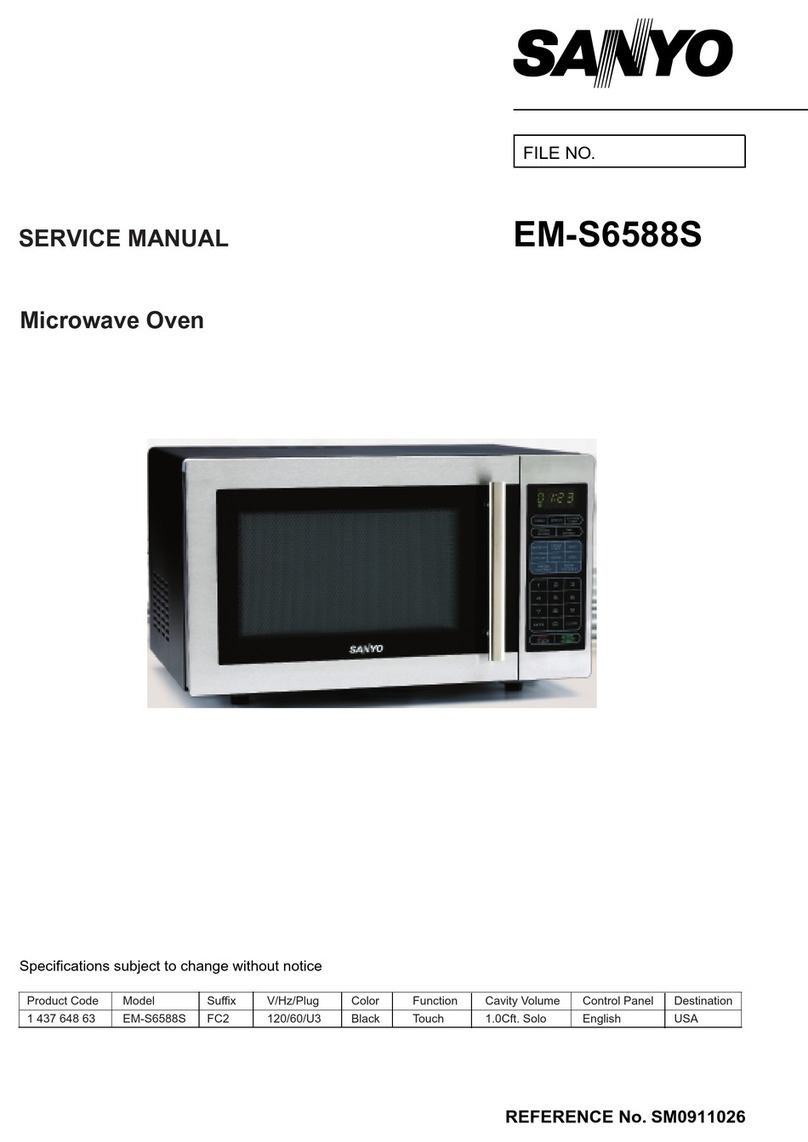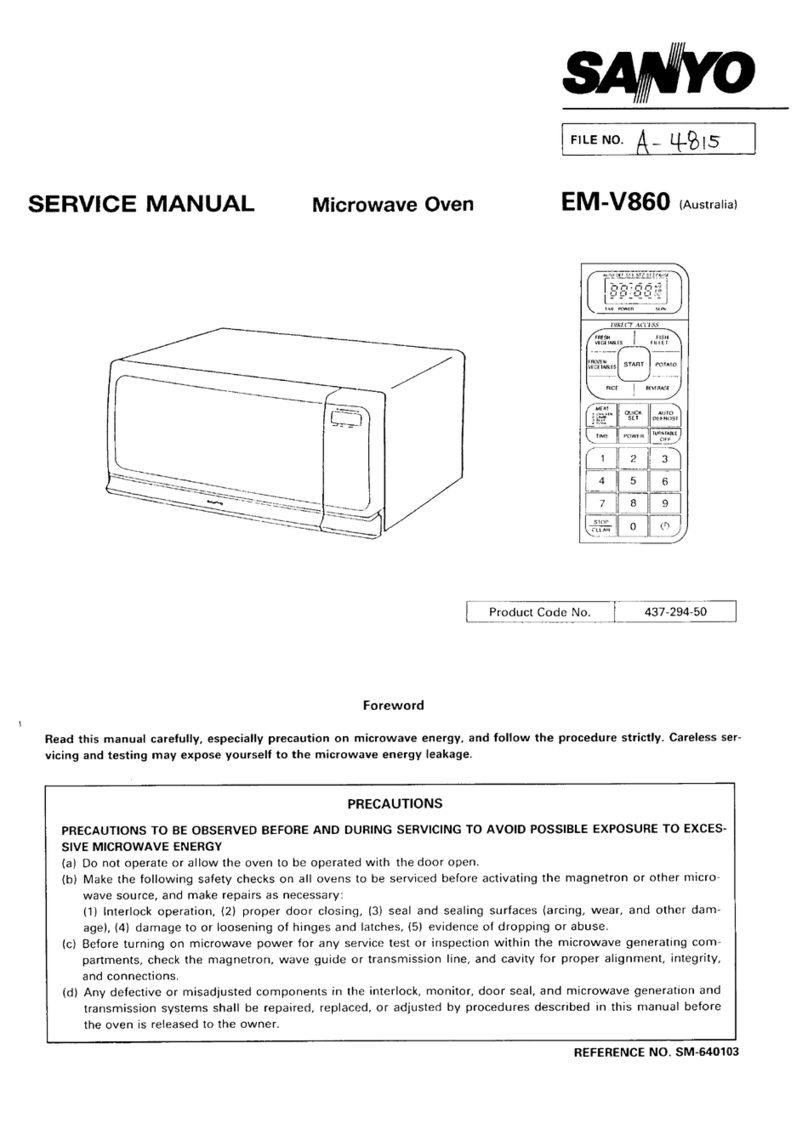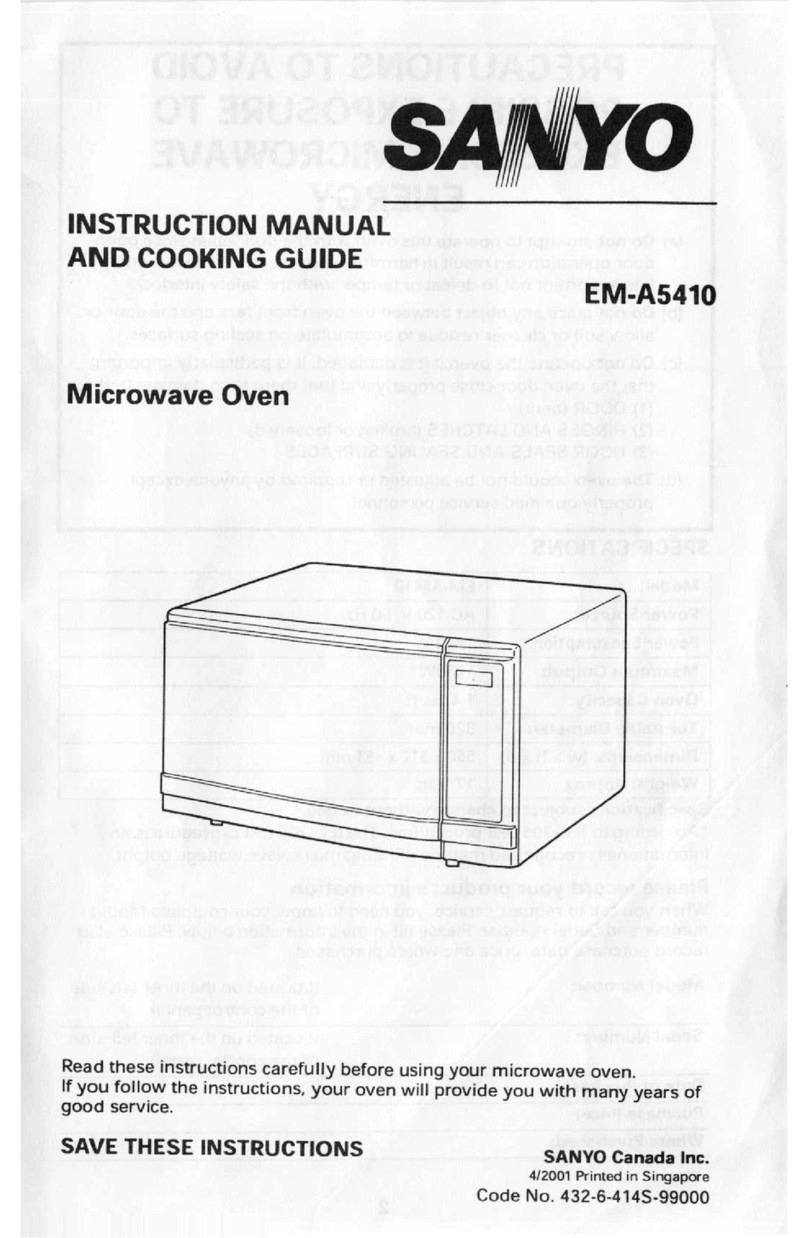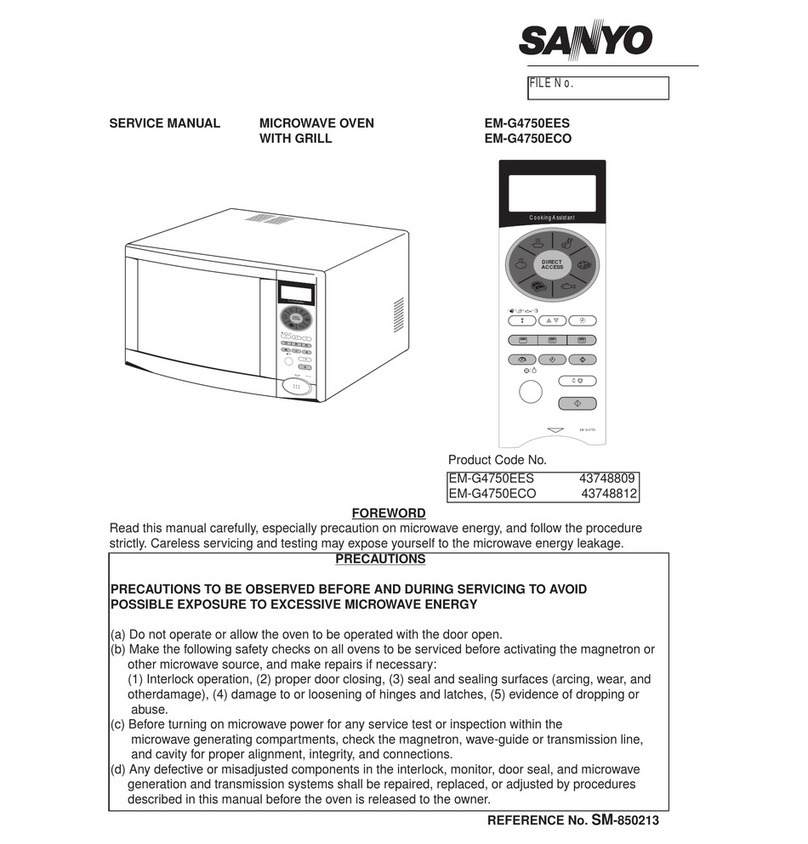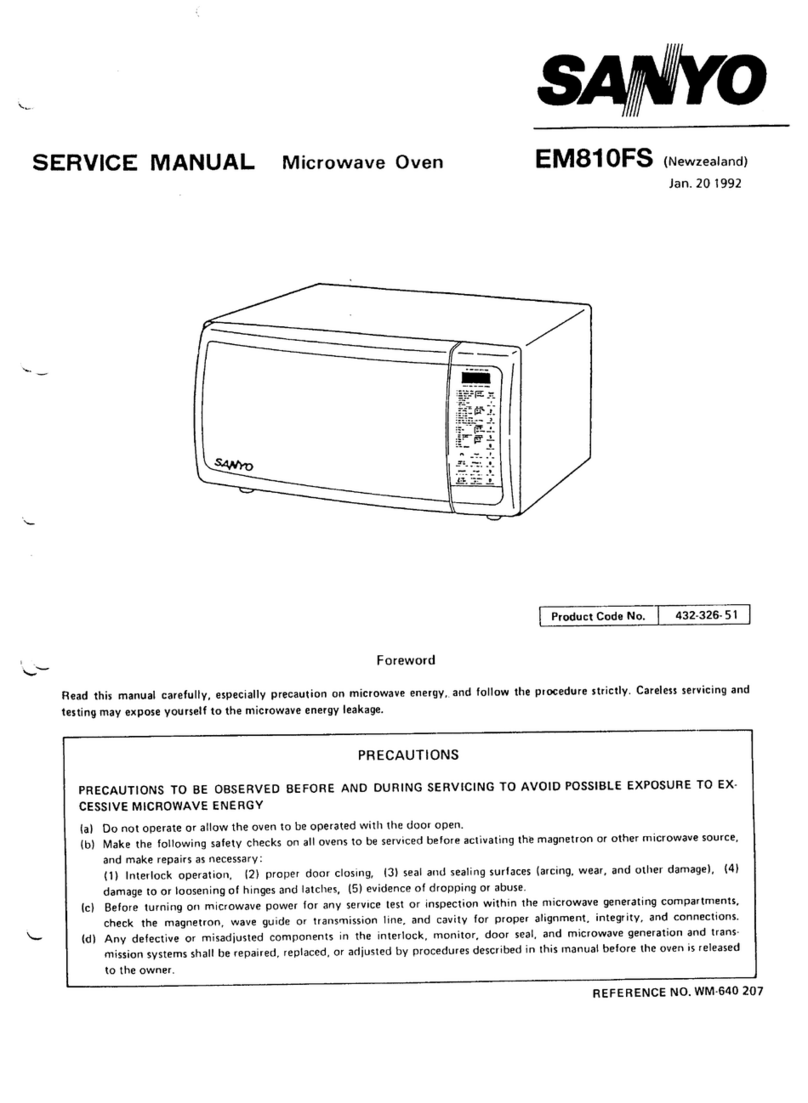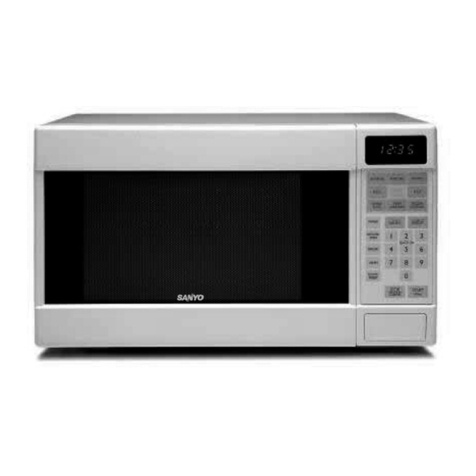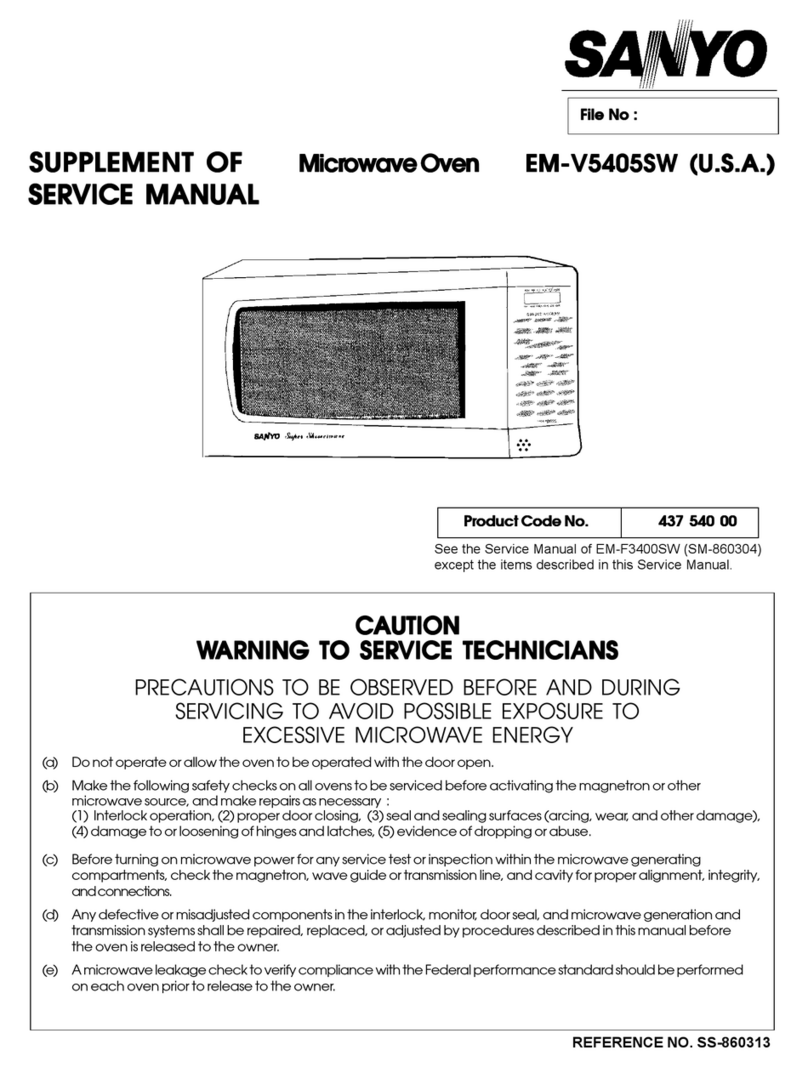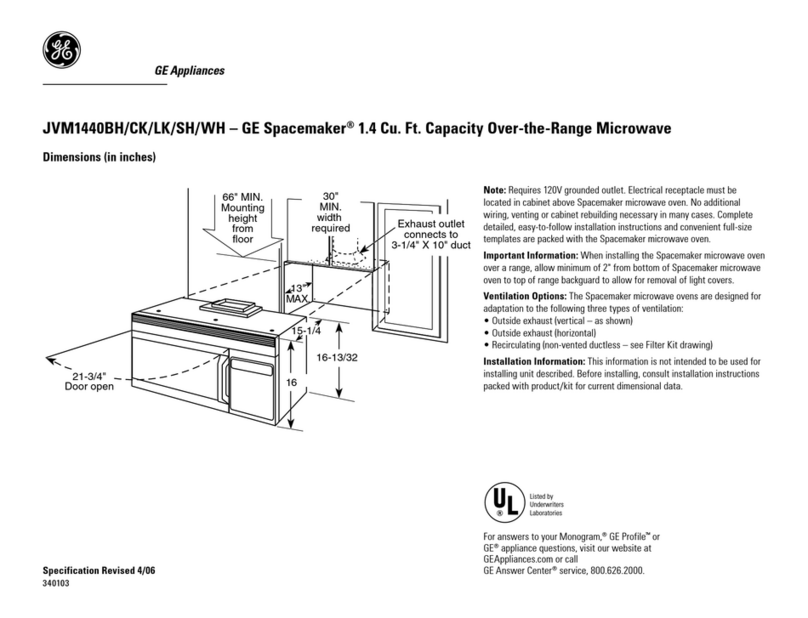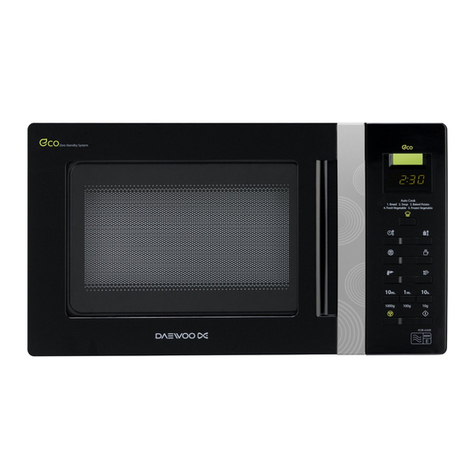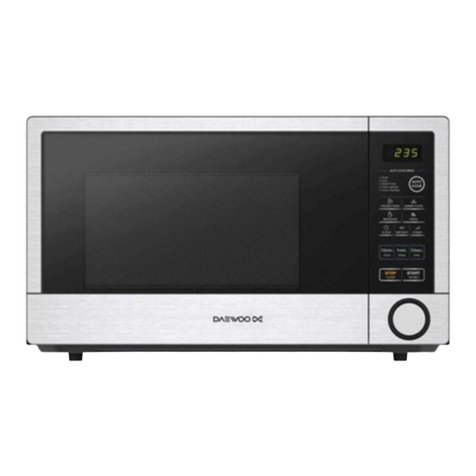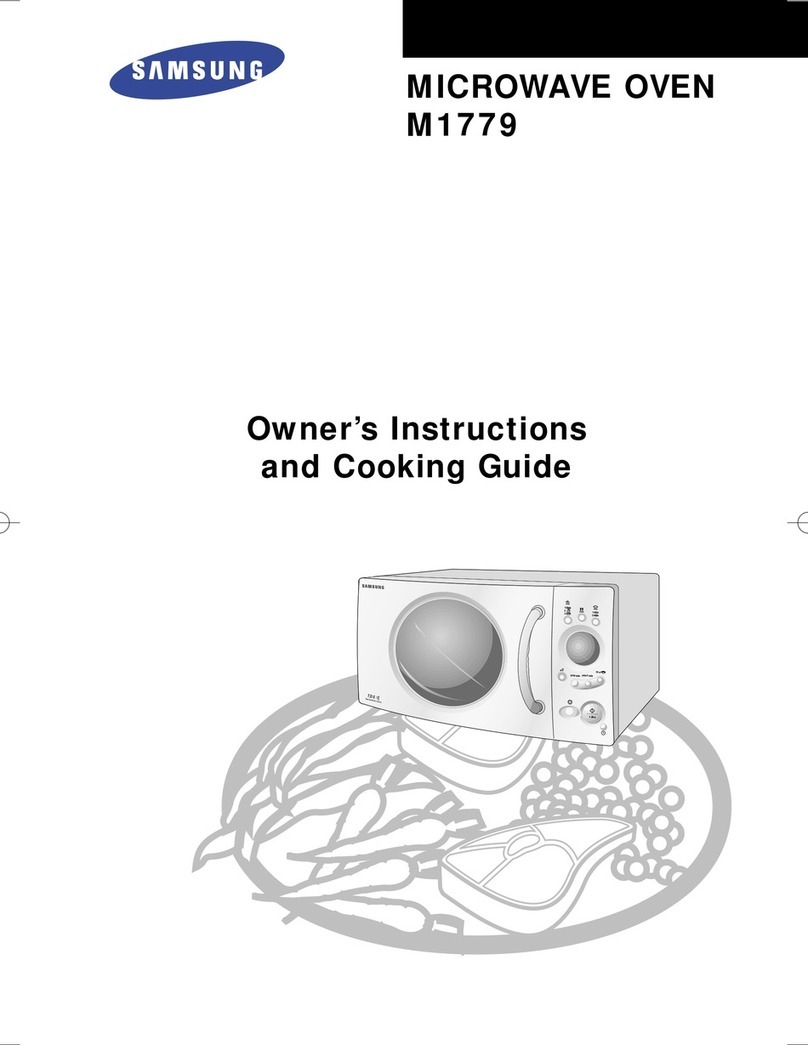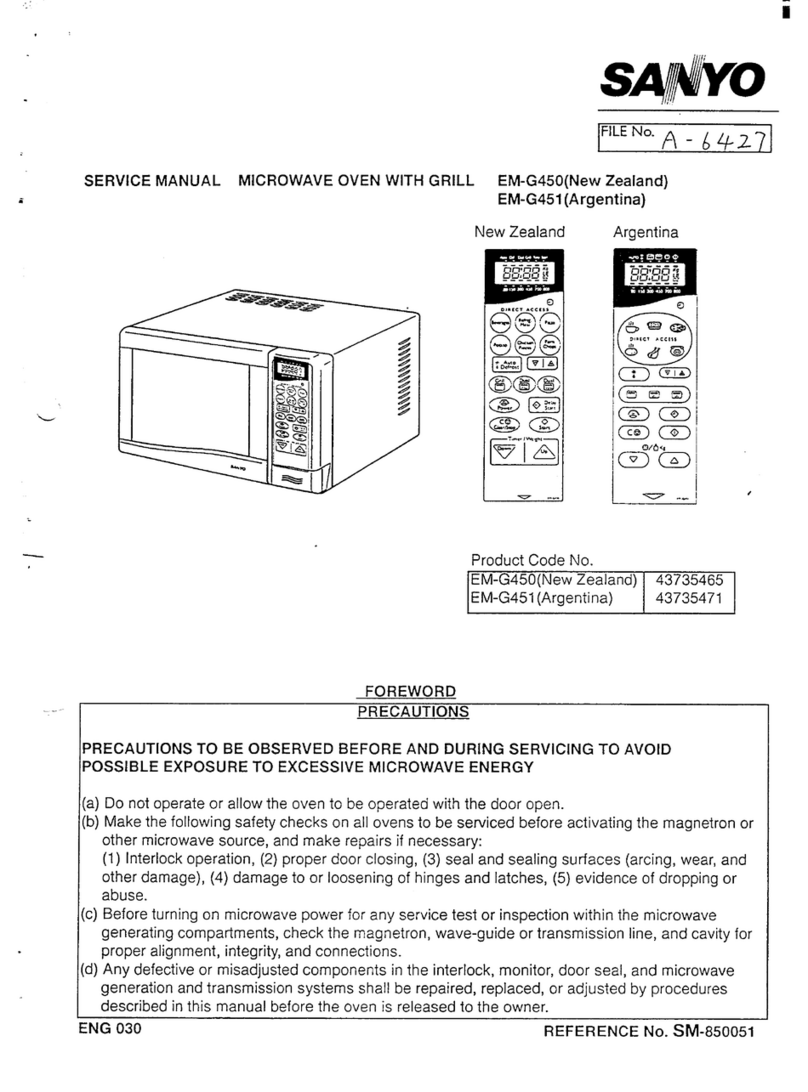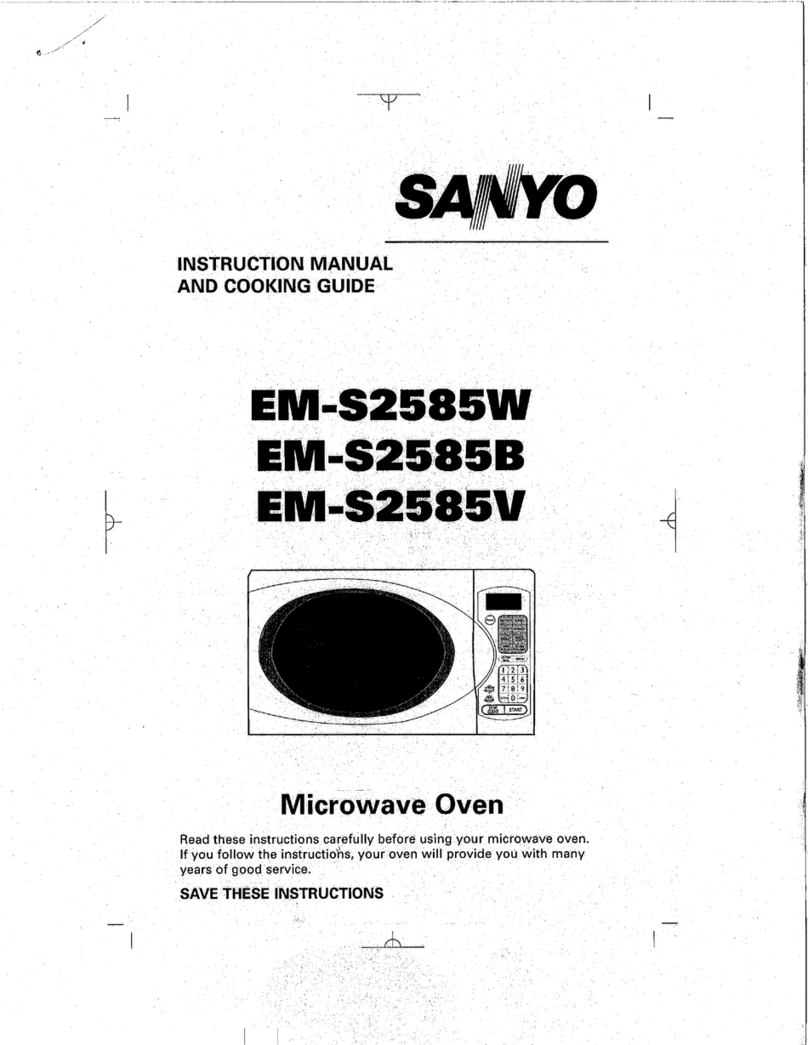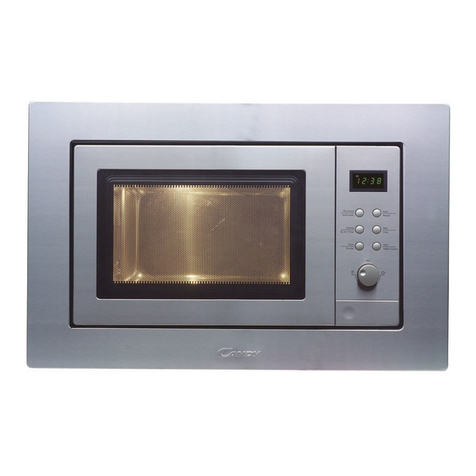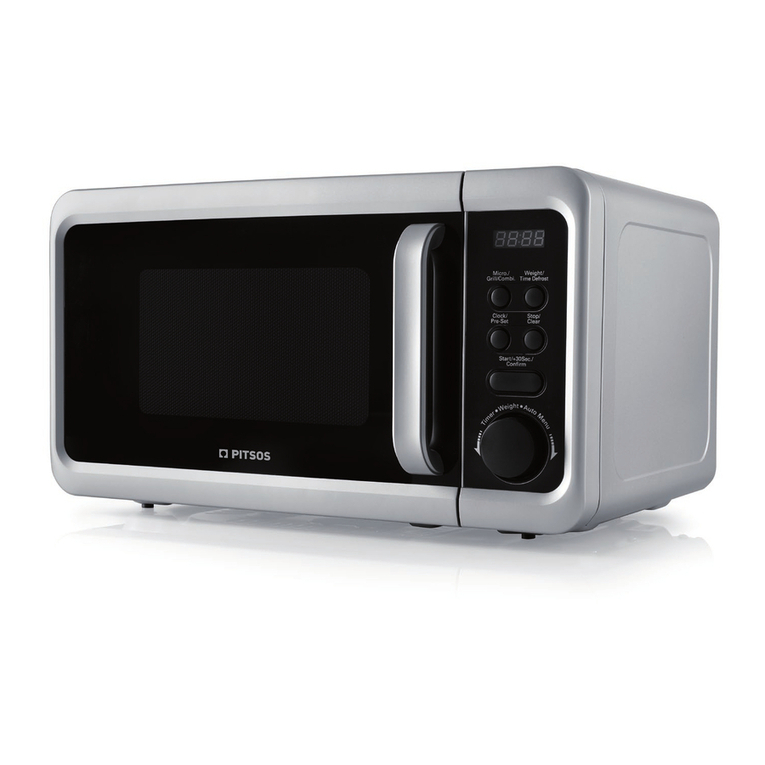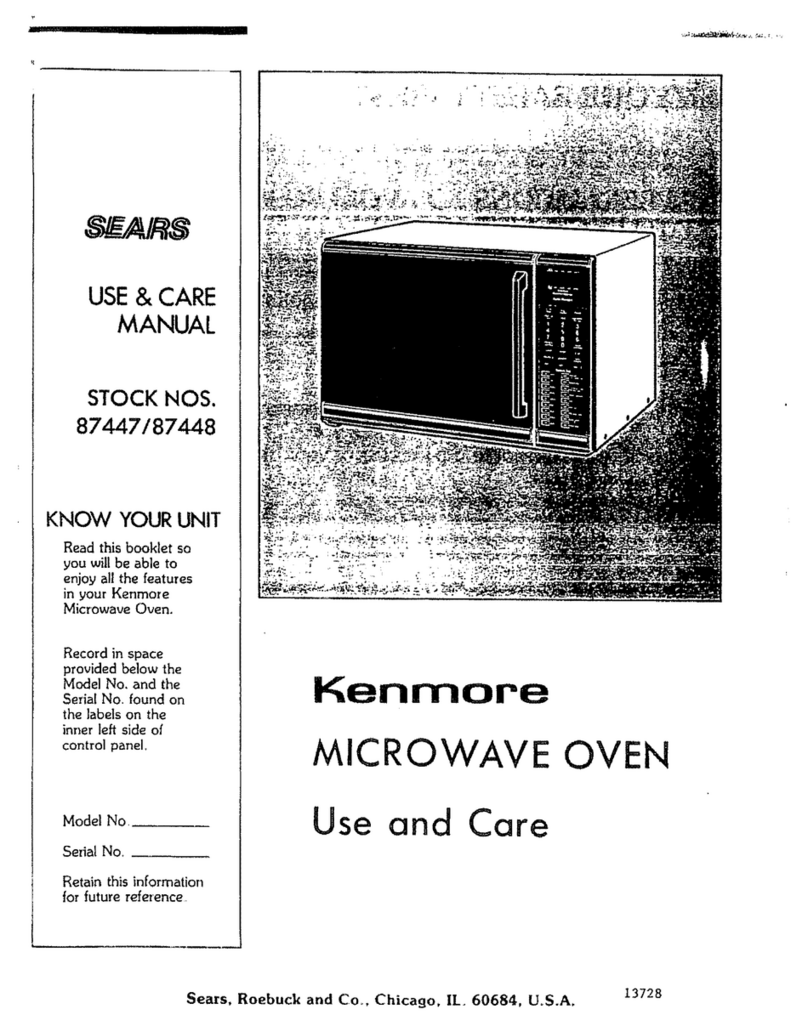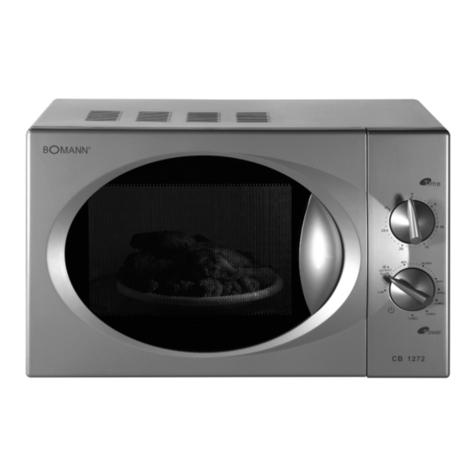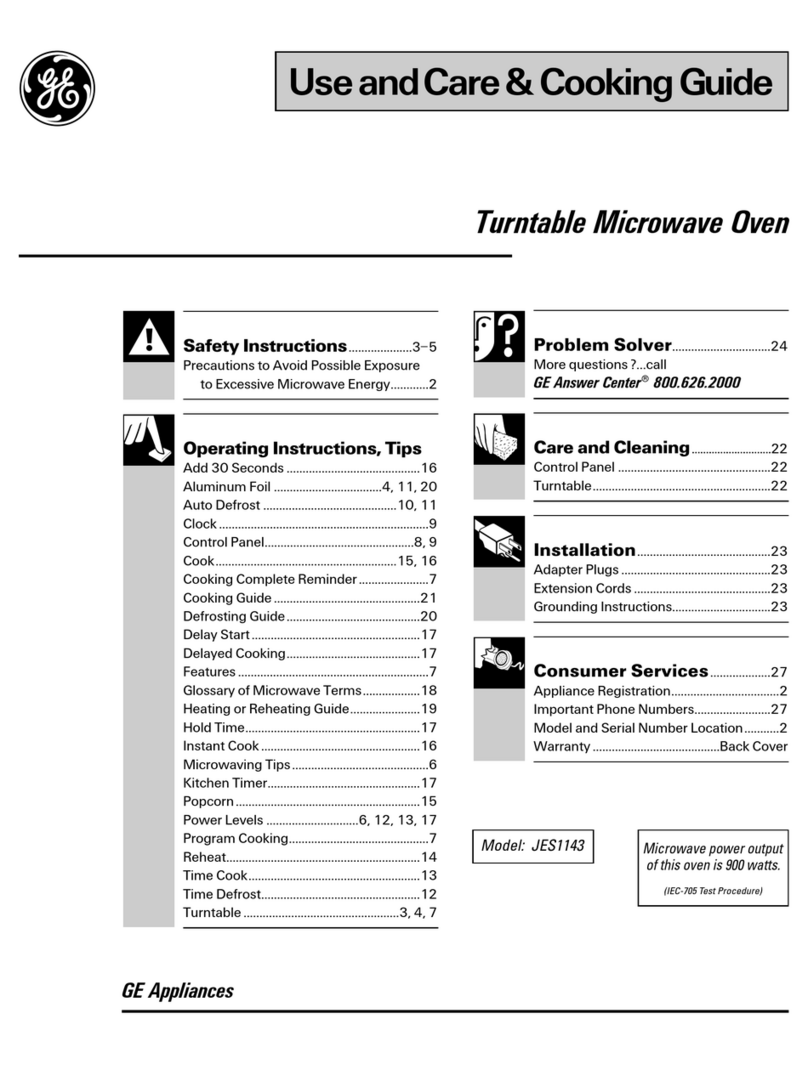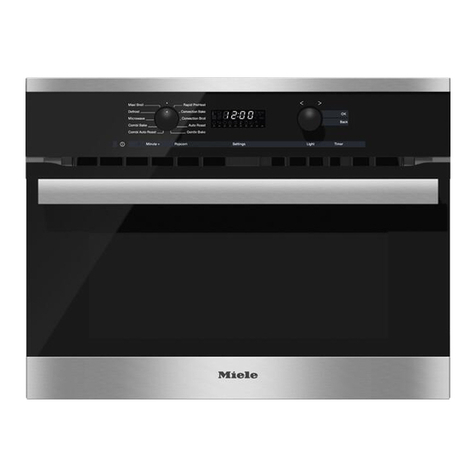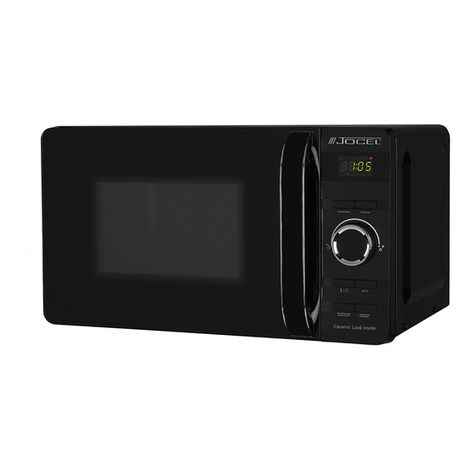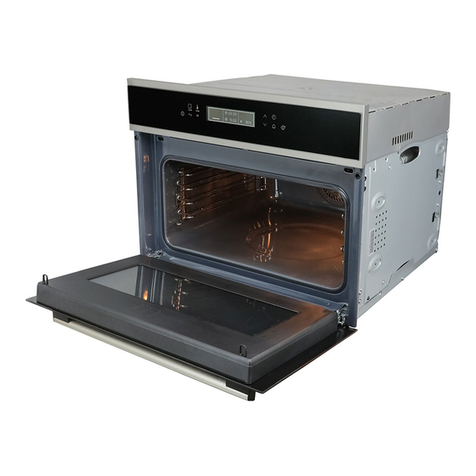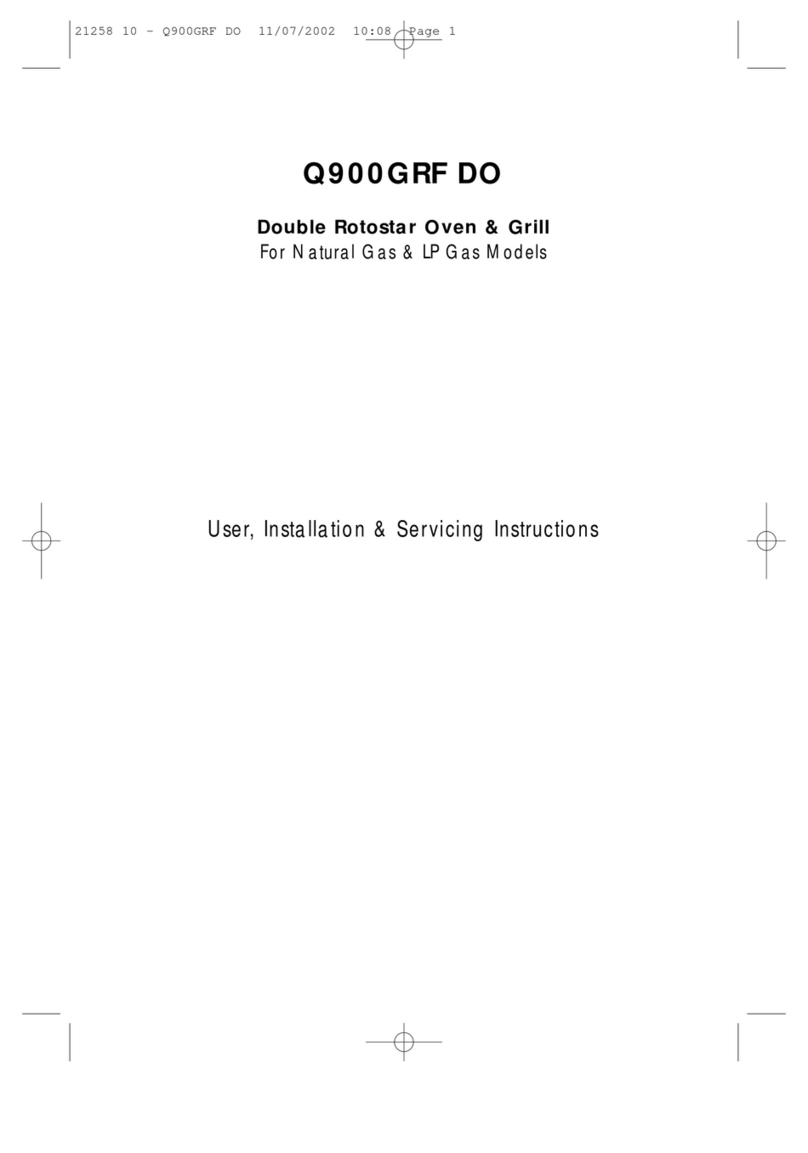2. SPECIFICATIONS
Rated Power Consumption . . .
Microwave Output . . . . . . .
Frequency ..............
Power Supply ...........
Rated Current ...........
Safety Devices ...........
Timer .................
Overall Dimensions ........
Oven Cavity Size . . . . . . . . .
Turn Table Diameter . . . . . . .
Effective Capacity of
Oven Cavity ...........
Net Weight . . . . . . . . . . . . .
1400W
700W
(Adjustable 155W through
700W)
2,450 MHz f50 MHz
230- 240V50HZ
6.0 Amp.
Thermal Protector, Open
at 135°C for Magnetron
Fuse (Cartridge Type 8A)
Primary Interlock Switch
Door Sensing Switch and
Relay 2
Interlock Monitor Switch
Electronic Digital, up to
99 min. 99 sec.
550(W) x453(D) x309(H) mm
375(W)X 404(D) x237(D) mm
360 mm
31 liter
Approx. 20 kg
3. POWER OUTPUT MEASUREMENT
(1) Fill two beakers (glass or plastic) with each one liter
of taP water (about 20° C) and measure the water
temperature. (Use athermometer with a1/10
degree gauge. )
(2) Place the beakers side by side in the center of the
glass tray.
(3) Close the door, set the “TIME” for two minutes.
(.,2 O(y? in the display window. )Touch the
“START” key and heat the water exactlv for two
minutes.
(4) Take the beakers out, immediately stir the water
and measure the water temperature respectively.
(5) Calculate the temperature rise of water in each
beaker. Then calculate the average value of two
temperature rises.
Output power can be calculated by the equation;
Power output (W) =70 x At
Where At is an average temperature rise in degrees
Centigrade.
(6) Output shall be in the following range:
Average temperature rise Power output
Minimum 9.O”C 630W
Maximum 11.5°c 805W
(7) Power output is affected by the line voltage under
load. For correct power output measurement, the
line voltage under load must be 240t 1volts.
4. PRECAUTIONS
PRELIMINARY
A. SINCE NEARLY
AND REPAIR SERVICE TIPS
4,OOO VOLTS EXISTS IN SOME
CIRCUITS OF THIS MICROWAVE OVEN, REPAIRs
SHOULD BE CARRIED OUT WITH GREAT CARE.
B. TO AVOID POSSIBLE EXPOSURE TO MlCROWAVE
ENERGY LEAKAGE, THE FOLLOWING PRE-
CAUTIONS MUST BE TAKEN BEFORE SERVICING.
(1) Before the power is applied:
(a) Open and close door serveral times to make sure the
primary interlock switch, the interlock monitor
switch and the door sensing switch operate proper-
ly. (Listen for the clicking sound from the switches. )
Make sure the interlock monitor switch closes after
the primary interlock switch is opens when the door
is opened.
(Seepages 1and 6)
(b) Make sure the perforated screen and the choke di-
electric of the door are correctly mounted.
(2)
(a)
(b)
(3)
(a)
(b)
(c)
(d)
(e)
(f)
(4)
(a)
(b)
(c)
(d)
(e)
The
After the power IS applied:
Open and close the door to see if the interlock
mechanism operates properly.
Check microwave energy leakage with aleakage
detector and confirm the energy leakage is below 5
mW/cm2.
Do not operate the unit until it is completely re-
paired, if any of the following conditions exists.
Door does not close firmly against the cavity front.
The hinge is broken.
The choke dielectric or the door seal is damaged.
The door is bent or warped, or there is any other
visible damage to the oven that may cause micro-
wave energy leakage.
NOTE: Always keep the seal clean.
Make sure that there are no defective parts in the
interlock mechanism.
Make sure that there are no defective parts in we
microwave generating and transmission assembly.
(especially waveguide)
The following items should be checked after the
unit is repaired:
The interlock monitor switch is connected correctly
and firmly.
The magnetron gasket on the magnetron is properly
positioned.
Waveguide and oven cavity are intact (no leakage of
microwave energy).
The door can be properly closed and the safety
switches work properly.
The oven must be stopped when the door is opened
or the time is up.
oven must not be operated with any of the above
components removed or bypassed.
–2–
